Sherlock Holmes: The Awakened review – A rousing reimagining of Frogwares’ 2006 Lovecraftian crossover

- 0 Comments
Frogwares has become well known in the gaming world for its interpretation of the great literary sleuth Sherlock Holmes. After a number of popular entries, the indie Ukrainian studio reinvented the franchise with Chapter One in 2021, delivering a fresh take on Sir Arthur Conan Doyle’s detective in the form of an origin story. Their latest Holmes game is a blend of old and new, casting this updated portrayal of the character in a remake of 2006’s The Awakened, in which Sherlock’s investigations of disappearances around the world lead him into a dangerous confrontation with a cult who worship the Lovecraftian monstrosity Cthulhu. While Chapter One offered a rich open-world experience with multifaceted gameplay, The Awakened opts for an episodic approach with smaller maps and much less uncertainty. The result is an excellent game with tightly focused, immersive storytelling that is both a faithful recreation of the original as well as an organic follow-up that picks up just where Chapter One left off.
The plot of The Awakened will be familiar to those who have played the original, as most of the major story beats are the same. But this time around, the continuation of Sherlock’s character arc from Chapter One brings with it a unique psychological aspect. A major component of that game was its depiction of Sherlock as suffering from severe disassociation, which, along with a strong ambiguity surrounding the accuracy of his conclusions, established the detective as lacking a complete grip on reality. So when The Awakened’s opening case—unique to the remake—sees Sherlock’s morning newspaper go missing, the detective’s immediate assumption that the disappearance is part of an elaborate conspiracy comes across very differently with this version of the character than it would with a more traditional interpretation. This introduction is a nice touch, as it allows players to get to know the distinct personalities of this iteration of both Sherlock and Watson on their own terms. Watson sticks around for the full adventure this time, effectively replacing an imaginary friend of Sherlock’s from Chapter One named Jon, a wonderful addition who does not appear in The Awakened but is paid loving tribute to.
It's not long before things begin to align more closely with the 2006 original, as Sherlock is tasked with investigating the disappearance of Kimihia, the Māori servant of Watson’s patient Captain Stenwick. The police assume that Kimihia simply walked out on the job, but Sherlock’s deductive abilities turn up subtle signs that he may have been taken by force. Probing deeper into the mystery, Sherlock discovers similarities between Kimihia’s circumstances and several other missing person cases throughout London, slowly unveiling a sinister plot with a global reach. Following the trail will take Sherlock to various locations around the world, where he and Watson will row through swamps densely populated by dangerous crocodiles, infiltrate a mental institution, and collect clues from a number of grisly scenes. But Sherlock alone must trek where Watson cannot—through otherworldly locations representing, ambiguously, either the detective’s deteriorating psyche or glimpses of an alternate dimension. This is all the more impactful given the aforementioned mental health issues explored in Chapter One.
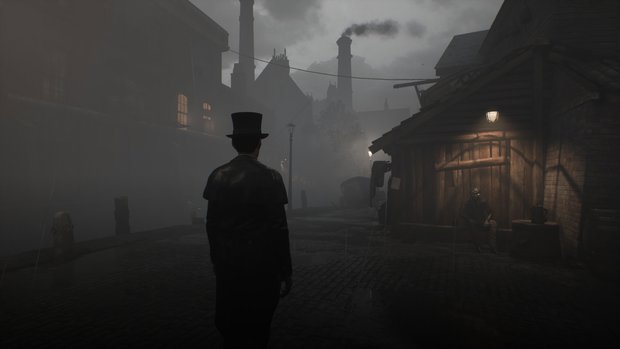
Such a diversity of settings calls for skillful art direction, and Frogwares goes above and beyond in this regard. The developers have typically opted for a realistic 3D style for their Sherlock games, and The Awakened continues this trend, with a look and feel very similar to Chapter One. With lush and detailed backgrounds and cinematic cutscenes, the game is striking visually. It’s clear a significant amount of historical research was done, so whether strolling through the cobblestone streets of London with their antiquated storefronts or making my way through the rickety shacks of the French Quarter in New Orleans, I felt transported to these places of the past. Players sensitive to gore should be advised that The Awakened does not shy away from it, and the murder scenes can be truly grotesque.
Most inspiring aesthetically are the aforementioned moments in which Sherlock becomes trapped in a strange, mystical world. These areas offer a unique combination of the macabre and the cosmic, the detective stranded atop jagged cliffs hanging over darkness, encountering bottomless chasms resembling monstrous mouths full of myriad sharp teeth and massive slimy tentacles poking up from the rocks. Above, stars and planets loom large, as though these structures are floating through space. There is a touch of psychedelia to these sequences, the muted color palette at times accented by glimmering pastels. At one point, Sherlock discusses philosophy with a hermit-like figure whose head hovers over a mountain, seeming to occupy the whole sky.
Much like with Chapter One, music in The Awakened largely stays out of the way, but it is effective in establishing atmosphere, with pleasant piano melodies and strings aiding the cinematic experience. You also get to hear some of Sherlock’s iconic violin skills. A number of thoughtful touches help to flesh out the sound design: sleek effects whenever you pick up an item or navigate through options in the menu, the hustle and bustle of the city, bugs chirping in the night. And the voice acting lives up to the high expectations Frogwares has set for themselves, with a truly outstanding cast, Alex Jordan continuing his excellent work as a young Sherlock and Andrew Wincott establishing a balance of compassion and no-nonsense ethos as Watson.
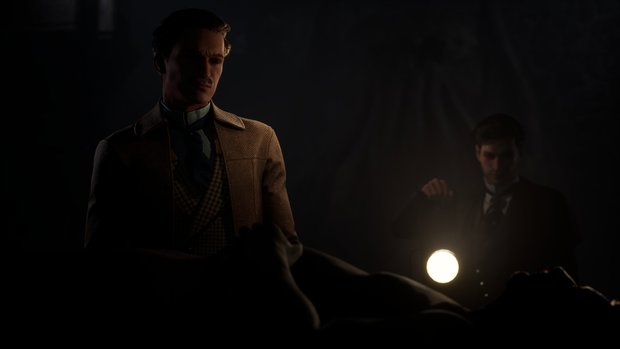
Jordan’s portrayal deserves special praise for how well it complements the visual elements of the character throughout a complex and well-crafted development over the course of the game. Since taking over the role, Jordan has been particularly good at alternating between the smug, know-it-all tone this version of the character habitually exhibits and moments of sobering self-reflection when he is forced to admit he’s been wrong. The Awakened sees Sherlock undergo mental stress that is expressed both in terms of his voice—often broken and exasperated during climactic points—and the detective’s appearance, which becomes increasingly unkempt, bloodshot eyes combining with messy stubble to create a harrowing look that evokes great sympathy.
In keeping with other contemporary depictions, the relationship between Holmes and Watson is much more balanced than in Doyle’s stories and novels. Watson has become less a sidekick than a level head to anchor Sherlock’s more erratic tendencies. In The Awakened, there are times when Watson almost seems like Sherlock’s caretaker, along for the ride more to protect him than to admire his skills. The age difference between the two is not made explicit, but Watson looks and acts somewhat older than the young detective, aiding this effect. You’ll play as Watson for many sequences—maybe 30 or 40 percent of the game even—and the final moments are spent switching between the two as they work together to ward off an impending evil. The characters don’t differ much in terms of how they play, though unique tasks given to each add meaningful distinction, and the change of perspective is welcome and offers nuance to the story.
The free-roaming interface is standard but effective. You use the WASD keys (or a control stick on a gamepad) to move and the mouse (or the other stick) to change the third-person view around Sherlock or Watson. A button can be held to make the character run. The concentration mode—appropriately exclusive to Sherlock—returns from Chapter One: push the relevant button, and the world will largely be rendered in shades of gray, with relevant interactive objects highlighted. A good deal of the gameplay takes place within a menu that lets you cycle through the Casebook (where your clues are stored), the map, and the Mind Palace, where Sherlock and Watson combine various pieces of evidence into a logic chart to arrive at crucial deductions. Disguises are not as much a part of this game as they were in Chapter One, but this menu also allows you to change Sherlock and Watson into various outfits, including traditional Ukrainian garments.
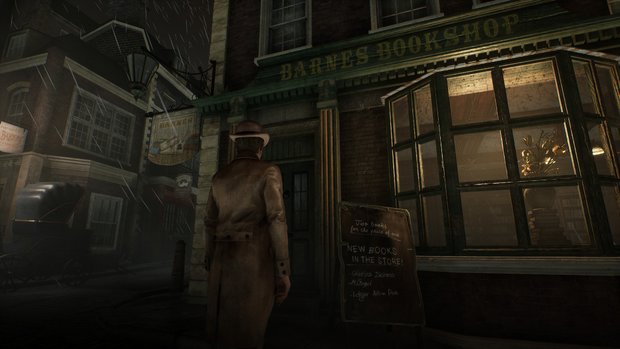
There are two preset levels of difficulty—Young Detective and Master of Deduction—or a third, called Mycroft, in which you can customize the difficulty based on individual settings. The main differences between modes are that on the harder one there are no interactive icons; you won’t receive notifications when you need to visit the Mind Palace (though this is immediately apparent when you open up the menu) or when you have gathered all evidence; and you cannot skip lockpicking sequences. The Mycroft setting gives you some in-between options—for example, you can choose not to see hotspots unless you press a button scanning the environment for them. I opted for this setting, because while I enjoy a good challenge, I struggle without any sort of indication for what I can or can’t interact with.
The Awakened clocks in at 15 hours or so, with the story moving quickly once it gets going. Helping the time speed by is a top-notch investigative adventure that offers compelling cases and great satisfaction when you are able to crack them. The bulk of what you’ll be doing is collecting evidence, which requires a careful survey of the environment. Some moments will cause the perspective to change to a first-person close-up view, telling you how many clues you’re looking for and checking them off as you find them. The game is rich in information, with many clues in the form of news clippings, journal entries, etc., and you’ll spend a fair amount of time reading these until you have a clear picture of events. Sometimes clues will have various icons that inform you on how to proceed.
At times you will need to visit the Mind Palace to put together relevant clues that will lead to conclusions. The Mind Palace will present questions like, “Where is Kimihia?” or “How do I access the second floor?” A color-coded system of nodes will make it clear how many pieces of evidence need to be combined and of what type (Observations, Documents and testimonies, and so on). The clues can be read in full from the Mind Palace, helping you arrive at your deductions with all the information you need readily available.
Then there are recreations, which must be completed in concentration mode. These will consist of five or six points where a notable action occurred. When you approach one of these locations, you can cycle through various possibilities represented by crude figures reenacting the scene. For example, one option might portray a person shaking hands with another, suggesting a willing interaction, whereas another might show the same person being knocked out by a blunt object, suggesting a kidnapping. When you’ve entered a choice for every relevant spot in the recreation, you will be prompted to confirm your findings. The game will let you know if you’ve gotten it wrong, in which case you will need to change at least one of the points to a different choice. Once you’ve selected correctly, the game will progress, with Sherlock detailing what took place.
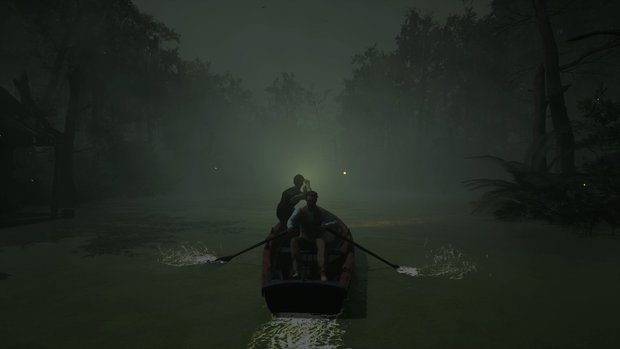
Often certain witnesses will need to be confronted with pieces of evidence. Sometimes this is simply to gain information, but other times a formal accusation will begin. The segments progress in a thrilling manner as Sherlock lays out his suspicions, intermittently prompted to back them up with a piece of evidence. There are three prompts per accusation, and if you choose incorrectly, the process will end and you’ll have to start over. These segments are imbued with a dramatic flair, and they are very satisfying to complete. Overall, they were my favorite part of The Awakened.
Whereas Chapter One contained a significant amount of ambiguity and choice, including in the Mind Palace and accusation portions, there is almost always a correct conclusion in The Awakened. Character portraits are really the only part that allows for anything in the way of doubt. For these you will survey an individual, examining various physical features and making observations. Then you will be presented with two conflicting conclusions about the person and asked to choose between them. While the game will progress similarly regardless of your choice, there is usually some implication as to whether you selected correctly or not, and sometimes an explicit confirmation or denial. A few are open to interpretation, though. There is also a very small amount of decision making—offhand, I can think of two moments when Sherlock can select whether he responds with or without compassion to a situation. These are secondary, with no real impact on the overall narrative, but for one of them you will see the consequence of your choice later on.
Occasionally a lock needs to be picked. You will be presented with a close view of a lock, its latches at different heights and the pick flat underneath them. The goal is to manipulate the pick until it pushes all of the latches up so that they no longer block the door. I did not find these puzzles to be overly challenging, though I wouldn’t say I ever got particularly good at solving them—mostly, I just tinkered about with the pick until I could proceed. But I enjoyed them for what they added to the feel of the game—the world’s greatest consulting detective would surely be adept at picking a lock, and utilizing this sneaky skill helps you get inside his head.
Aside from the open world vs. episodic aspect, the biggest difference between Chapter One and The Awakened is that the former had a substantial amount of combat (albeit skippable) and Quick Time Events, while The Awakened features hardly any. A few moments call for a gun, but they are very simple and generous with time, and a game-over can occur only towards the end of the game, in which case you resume play just shortly prior. There are actually times during Sherlock’s interdimensional sequences, though, in which you must put yourself in apparent harm’s way in order to proceed. I don’t want to spoil these parts by saying too much, but I found them fascinating.
Speaking of Sherlock’s dives into the void, these segments operate under an entirely different logic than the rest of the game, featuring more traditional puzzle solving and little to no investigative work. The goal here is generally to create a path one way or another, and you’ll need to do things like collect pieces of stone that must be slotted into pillars, use concentration to make items in the environment responsive, and find hidden switches that alter walkways. Some of these puzzles are immensely intriguing, and overall they provide a welcome change of pace and challenge distinct from detective work.
The Awakened is so well-crafted that it feels like nitpicking to talk about its flaws, but there are a few minor shortcomings that bear mention, the game lacking some of the depth of Chapter One. The biggest culprit here is the Mind Palace, whose streamlined approach is a touch too tempting to exploit with trial and error rather than work through honestly. Also, as much as I loved the accusation system, whenever you are prompted to reinforce your assertions with evidence, it randomly assembles a list of possible wrong answers that sometimes includes pieces of evidence that are perfectly relevant to the accusation and are, in fact, correct answers to later prompts. This wouldn’t be an issue if the sequences were written so that it only made sense to present a particular clue at a particular point, but there are times when there is no good reason to pick one relevant clue over another, aside from the fact that it contradicts the way the script plays out. Finally, there are a few places where non-player characters make only nonverbal utterances instead of real comments—a lot of games do this, so it’s not a problem in and of itself, but it is at odds with the otherwise realistic tone here. Fortunately, these are few and far between.
Final Verdict
As the opening credits to The Awakened point out, development on the game began in April of 2022, just two months after Ukraine was invaded by Russia in a brutal war that is still ongoing at the time of writing. Based in Kyiv, Frogwares has demonstrated an admirable resilience in refusing to allow such adversity to stop them from making art, and that they’ve been able to deliver such an impressive entry under these circumstances is nothing short of amazing. But Sherlock Holmes: The Awakened would be an excellent game even without its extraordinary production background. It is the rare remake that warrants its existence not just through graphical updates (though it looks considerably better than its predecessor) but through a commitment to fresh interpretations of its characters. It is a fully fleshed-out, engaging adventure presented with sharp storytelling, recycling the best of the original while offering a satisfying continuation of the Chapter One timeline. Whether you’ve played the earlier version of The Awakened or not, fans of great detective games will find it well worth the time.
Hot take
With a sharp narrative focus, engaging gameplay, and a fresh take on its characters as younger men, Sherlock Holmes: The Awakened functions as both a stellar remake and a compelling sequel to Chapter One.
Pros
- Taut, thrilling story
- Stunning 3D graphics with a focus on historical authenticity
- Atmospheric, cinematic feel with consummate voice performances from its lead actors
- Refreshing take on Sherlock and Watson, with genuine character development
- Fun and immersive detective work with a few traditional adventure puzzles
Cons
- Certain parts are a little too easy to complete with just trial and error
- Some vagueness about presenting clues during accusations
Andy played Sherlock Holmes: The Awakened on PC using a review code provided by the game's publisher.

- Advertisement
- Help support AGH by advertising with us

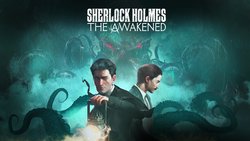







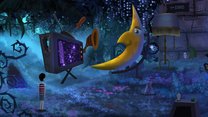
0 Comments
Want to join the discussion? Leave a comment as guest, sign in or register.
Leave a comment